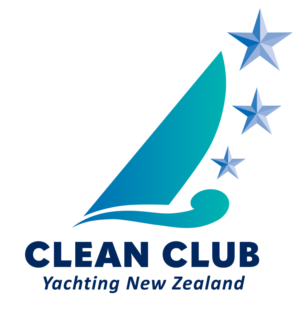Crossing Cook Strait
(courtesy of Royal Port Nicholson Yacht Club)
Cook Strait is a natural wind funnel bordered by high geographic features on the North and South Islands and at times creates a formidable gauntlet for boats sailing to and from the South Island. The following information is provided to help you cross the Strait safely.
Wind
Wind direction in Cook Strait is normally NW or S to SE. Storm force winds occur on average about 25 times a year. Gale force NW winds are usually very localised but S gales affect the whole strait. SE gales are more pronounced on the western side of the strait.
Tide
Tidal streams in Cook Strait generally flow towards the NW for 5 hours and SE for 7 hours, however they are unreliable and the surface currents are affected by prolonged periods of strong winds and the shoreline configuration which can cause counter currents if close inshore.
High water occurs on the western side of Cook Strait about 4 hours later than Wellington at spring tides and slightly less at neap tides. This difference causes the strong streams. The streams are stronger during spring tides, which occur at two weekly intervals, when high water Wellington is at about 0600 hours and 1800 hours.
Tidal stream predictions for Tory Channel have generally been found to be very accurate.
Sea
Broken water is experienced in different parts of the strait. This is caused by the cold north setting bottom current being forced to the surface on meeting the steep slopes of submarine canyons, which will also cause modification of the tidal stream. Broken water is also caused when the wind flow is against the tidal stream especially between Sinclair Head and Cape Terawhiti, off the eastern entrance of Tory Channel and in the vicinity of The Brothers.
Sailing Instructions
The combination of broken water and strong wind gusts between Sinclair Head and Cape Terawhiti make it advisable to transit this section of the passage (commonly known as The Rip) at slack water. This section of your voyage is generally the most uncomfortable and should not be attempted by small craft or the inexperienced except in favourable conditions. Strong southerly winds with a SE setting tidal stream can make this area a real horror show and, in the interests of safe boating and harmonious crew relations, should be avoided.
The times given assume a speed of 6-7 knots.
Travelling Westbound
Leave Wellington to arrive at Sinclair Head one hour before HW Wellington. You will then have a favourable tidal stream across Cook Strait.
Alternatively, leave Wellington to arrive at Sinclair Head one hour before LW Wellington. You will then have an adverse tidal stream across Cook Strait but this may be preferable in northerly winds. Tory Channel will be reached at slack water.
Travelling Eastbound
Leave Tory Channel two hours after tidal stream commences setting east. You will have a favourable tidal stream across Cook Strait-Cape Terawhiti-Sinclair Head area. Alternatively, in southerly winds leave Tory Channel as the tidal stream starts setting west. You will have an adverse tidal stream across Cook Strait but this may be preferable in southerly winds. Cape Terawhiti-Sinclair Head area will be reached at slack water.
Tory Channel Eastern Entrance
Ships make frequent use of Tory Channel and you must keep clear of the mid channel at the eastern entrance when large ships are present. All ships transiting the entrance are required to give a 10-minute warning of this on VHF Channel 19 (Port Operations Channel). Whether a warning is heard or not, the entrance should be navigated with caution at all times.
Ferry and shipping timetables are subject to seasonal changes and skippers are reminded that they must keep clear of all shipping lanes at all times.
Clearing Marks
Thoms Rock
This is situated between Karori Rock and Sinclair Head and lies 0.35 miles (650 metres) outside a line joining these points. Rock hopping in this area is not advisable.
By Day: Keep Pencarrow Lighthouse visible through Sinclair Head until Karori Rock is open from Cape Koamaru.
By Night: Keep Pencarrow Light visible (red or white) until Tongue Point Light changes from red to white.
Sinclair Head
By Day: To pass about one mile off Sinclair Head keep Pencarrow Lighthouse (lower) and Old Lighthouse (upper) in line.
By Night: Keep in the white sector of Pencarrow Light to pass 0.7 miles of Sinclair.
Checking on Tidal Set
By Day: Observe Karori Rock relative to Sinclair Head or Turakirae Head. Observe Tory Channel entrance relative to Mount Stokes.
By Night: Observe Tory Channel Entrance Leading Lights.
Radio
Ships maintain a listening watch on the following frequencies:
- within Wellington Harbour limits – VHF Channel 14
- within Marlbourough Harbour limits – VHF Channel 18
- within Cook Strait – VHF Channel 16
Click here for link to the Cruise Guide to the Marlborough Sounds, (Waikawa Bay)
The Cruise Guide to the Marlborough Sounds is an interactive App and Website of marinas, anchorages, boat ramps, moorings, facilities, and other local knowledge presented visually on a smart map, together with satellite images and nautical charts. This link takes you to the Waikawa Bay specific, chart section.

